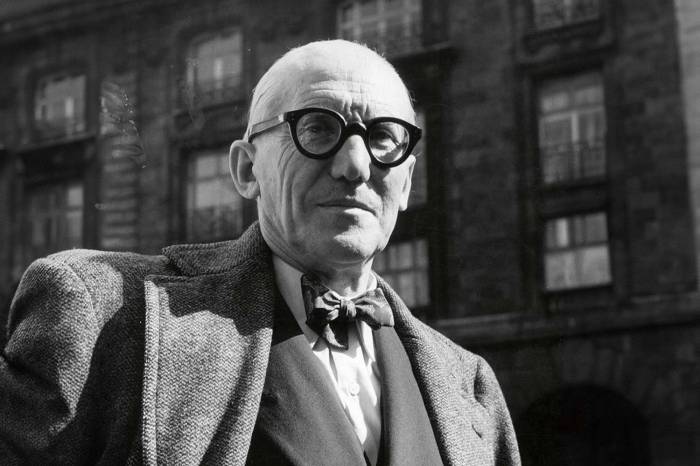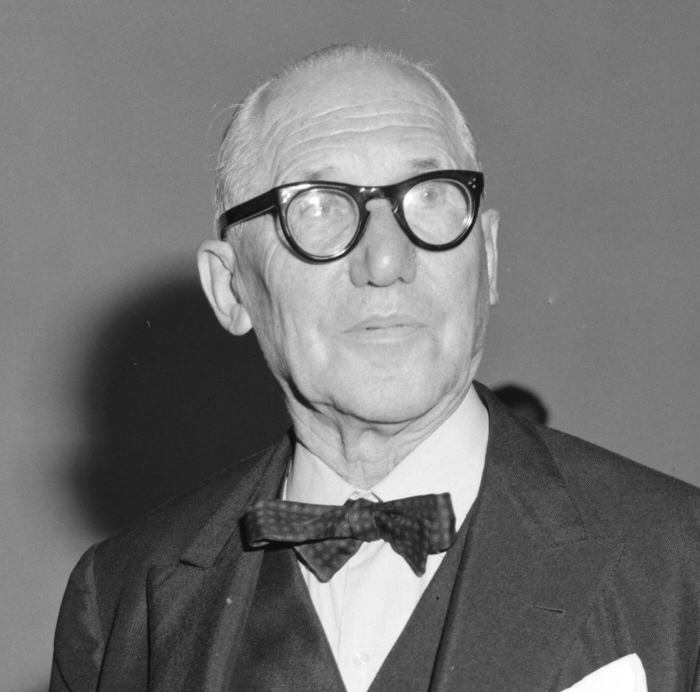Exploring the Legacy of Le Corbusier
Embark on a journey through the life and work of the legendary architect Le Corbusier, whose innovative designs revolutionized modern architecture and urban planning.
Dive into the key aspects of his style, iconic projects, and design philosophy that continue to influence the architectural world today.
Background of Le Corbusier

Le Corbusier, born Charles-Édouard Jeanneret-Gris in 1887 in Switzerland, was a pioneering architect, designer, urban planner, and writer. His career spanned the early to mid-20th century, and he played a significant role in shaping modern architecture and urban planning.Le Corbusier is known for his innovative approach to design, which focused on functionality, efficiency, and the use of modern materials such as steel and reinforced concrete.
He was a key figure in the development of the International Style, characterized by clean lines, open spaces, and a rejection of ornamentation.
Contributions to Modern Architecture and Urban Planning
- Le Corbusier's "Five Points of Architecture" revolutionized the way buildings were designed, emphasizing pilotis (supporting columns), open floor plans, horizontal windows, free facade design, and roof gardens.
- He is renowned for his iconic works like Villa Savoye, the Unité d'Habitation in Marseille, and the Chandigarh Capitol Complex in India, which showcase his principles of modern architecture.
- Le Corbusier's urban planning concepts aimed to improve the quality of life for residents, with projects like the Radiant City proposing large-scale housing developments with green spaces and efficient transportation systems.
Significance of His Work in the Architectural World
- Le Corbusier's influence can be seen in architecture around the globe, as his ideas on form, function, and urban design continue to inspire architects and city planners.
- His writings, such as "Towards a New Architecture," have become seminal texts in the field, shaping the discourse on modern design and the relationship between architecture and society.
- By challenging traditional norms and embracing new technologies, Le Corbusier paved the way for a more rational, efficient, and human-centered approach to architecture that still resonates today.
Architectural Style of Le Corbusier
Le Corbusier, a pioneer of modern architecture, is known for his unique architectural style that revolutionized the field. His designs were marked by several key characteristics that set him apart from his contemporaries.
Key Characteristics of Le Corbusier’s Architectural Style
- Use of pilotis: Le Corbusier often incorporated pilotis, or stilts, into his designs to elevate the building from the ground, creating an open space underneath.
- Horizontal windows: He utilized horizontal windows to allow for abundant natural light and to provide panoramic views, emphasizing the connection between the interior and exterior spaces.
- Open floor plans: Le Corbusier favored open floor plans that allowed for flexibility in the use of space and promoted a sense of fluidity within the building.
Materials, Forms, and Spatial Arrangements
Le Corbusier's use of materials such as concrete, steel, and glass reflected his belief in the use of industrial materials in architecture. His designs featured geometric forms and clean lines, showcasing a minimalist aesthetic. Spatial arrangements in his buildings were carefully planned to optimize functionality and efficiency.
Comparison with Other Prominent Architects
When compared to other prominent architects of his time, such as Frank Lloyd Wright and Ludwig Mies van der Rohe, Le Corbusier's style stood out for its boldness and modernity. While Wright focused on organic architecture that harmonized with nature, and Mies van der Rohe embraced the principle of "less is more," Le Corbusier's approach was characterized by a stark simplicity and a focus on functionality above all else.
Iconic Projects by Le Corbusier

Le Corbusier, a pioneer in modern architecture, left a lasting impact on the field with his iconic projects that revolutionized urban design. Let's delve into some of his most famous architectural works and explore the design principles and innovations that made them truly groundbreaking.
Villa Savoye
The Villa Savoye, located in Poissy, France, is one of Le Corbusier's most famous works. Completed in 1931, this modernist masterpiece is a manifestation of Le Corbusier's "Five Points of Architecture," which include pilotis, flat roof terrace, open floor plan, horizontal windows, and free facade.
The villa's sleek, white design and functional layout represent a shift towards a new era of architectural minimalism and functionality.
Unité d’Habitation
Le Corbusier's Unité d'Habitation in Marseille, France, is a pioneering example of modernist residential architecture. Completed in 1952, this iconic housing complex features a modular design, communal living spaces, and a unique "streets in the sky" concept that aimed to foster a sense of community among residents.
The building's innovative approach to urban living influenced future high-rise residential developments worldwide.
Chandigarh Capitol Complex
The Chandigarh Capitol Complex in India stands as a testament to Le Corbusier's vision for urban planning on a grand scale. Designed in the 1950s, this complex includes the High Court, the Secretariat, and the Legislative Assembly, all showcasing Le Corbusier's signature modernist style.
The open spaces, geometric forms, and functional layout of the complex reflect his principles of urban design and architectural innovation.
Le Corbusier’s Design Philosophy
Le Corbusier, a pioneer of modern architecture, believed in the marriage of functionality and aesthetics in his designs. His approach to architecture and urban planning was guided by the principle of creating buildings that were not only visually striking but also served a purpose in the lives of the people who inhabited them.
Functionality in Design
Le Corbusier emphasized the importance of functionality in architecture, focusing on the efficient use of space and incorporating elements that catered to the needs of the occupants. His designs often featured open floor plans, modular furniture, and innovative storage solutions to maximize usability.
Aesthetics and Form
In terms of aesthetics, Le Corbusier favored clean lines, geometric shapes, and a minimalist aesthetic. He believed in the beauty of simplicity and sought to create buildings that were visually appealing while also being structurally sound. His use of materials such as concrete, steel, and glass helped him achieve a sleek and modern look in his designs.
Relationship with Surroundings
Le Corbusier was also concerned with the relationship between buildings and their surroundings. He believed that architecture should respond to its environment and enhance the urban fabric. His designs often incorporated green spaces, natural light, and ventilation to create a harmonious connection between the built environment and nature.Overall, Le Corbusier's design philosophy can be seen in iconic projects such as the Villa Savoye, the Unité d'Habitation, and the Chandigarh Capitol Complex, where functionality, aesthetics, and the relationship with the surroundings are seamlessly integrated to create timeless works of art.
Ultimate Conclusion
As we conclude our exploration of Le Corbusier, we are left with a deep appreciation for his lasting impact on the world of architecture, inspiring generations to come.
FAQs
What influenced Le Corbusier's architectural style?
Le Corbusier was greatly influenced by his travels, the industrial revolution, and the modernist movement, shaping his unique approach to design.
How did Le Corbusier view the relationship between buildings and their surroundings?
Le Corbusier believed in harmonizing buildings with nature and creating spaces that enhance the quality of life for inhabitants.
What are some of Le Corbusier's most famous projects?
Iconic projects by Le Corbusier include Villa Savoye, Unité d'Habitation, and the Chandigarh Capitol Complex, each showcasing his innovative design principles.




